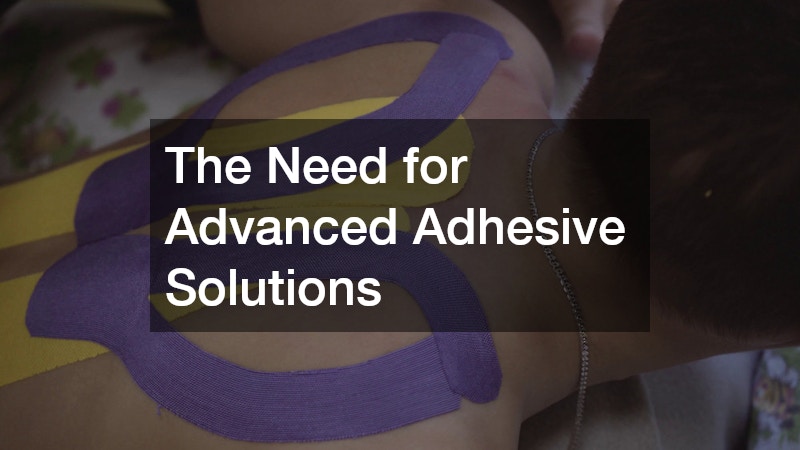This article delves into the increasing demand for advanced adhesive solutions, exploring their applications, innovations, and impact across various industries. As industries evolve, the necessity for adhesives that can perform under challenging conditions becomes more pronounced.
What are Advanced Adhesive Solutions?
Definition and Overview
Advanced adhesive solutions are specialized bonding agents designed to meet the needs of modern industries by providing high-performance characteristics like improved strength and thermal resistance. These adhesives have evolved thanks to technological advancements, making them indispensable in the current industrial landscape.
Their primary characteristics include enhanced bonding power, adaptability to different materials, and resistance to environmental factors. As the demand for multi-functional products grows, so does the need for adhesives that can rise to the challenge.
Moreover, advanced adhesives are designed to be compatible with innovative manufacturing processes, paving the way for further industrial advancements. They bridge the gap between traditional bonding methods and the requirements of cutting-edge technologies.
Key Applications
The versatility of advanced adhesives sees them being used in sectors ranging from automotive to aerospace, offering solutions where traditional bonding might fail. In the medical field, for instance, these adhesives ensure the safe and reliable assembly of medical devices.
In the electronics industry, advanced adhesives provide critical insulation properties for components, ensuring longevity and performance. Their role in fashion and furniture, where aesthetics and strength are equally important, also underscores their broad applicability.
The construction industry benefits from adhesives by using them to enhance the structural integrity of buildings without compromising weight. As innovative materials are incorporated into design and construction, advanced adhesives provide solutions that traditional joining methods cannot.
Why are Advanced Adhesives Essential in Modern Manufacturing?
Enhancing Product Durability
Advanced adhesives contribute significantly to the longevity and durability of products by forming stronger bonds than traditional methods. These adhesives enable manufacturers to create products that withstand extensive wear and tear, ultimately reducing cost over time.
This durability is especially crucial in industries such as automotive and aerospace, where safety and performance are non-negotiable. By incorporating advanced adhesives, products can maintain integrity even under adverse conditions.
Additionally, adhesives that perform well over time support sustainability goals by reducing the need for frequent replacements and repairs. The result is a decrease in resource consumption and maintenance requirements.
Innovations in Manufacturing Processes
Advanced adhesives have revolutionized manufacturing processes, facilitating the creation of multifunctional products through streamlined production methods. Their ability to bond dissimilar materials allows for greater flexibility in product design.
These adhesives enable manufacturers to implement new techniques like 3D printing and additive manufacturing, pushing the boundaries of what’s achievable. The integration of smart manufacturing systems further benefits from adhesives that can maintain efficiency and speed in production.
With the advent of agile manufacturing demands, advanced adhesives ensure that these processes are both reliable and productive. The seamless adaptability of these adhesives aligns well with evolving industrial paradigms, making them a pivotal component in modern manufacturing.
How do Advanced Adhesive Solutions Contribute to Sustainability?
Reduction of Environmental Footprint
Advanced adhesive solutions play a key role in minimizing the environmental impact by enabling the use of sustainable materials, which can be bonded without compromising structural integrity. This effort aids industries in their pursuit of eco-friendly production processes.
These adhesives are formulated to be solvent-free, reducing volatile organic compounds (VOCs) emissions significantly. As a result, they help manufacturers align with environmental regulations and reduce carbon footprints.
Moreover, the use of such adhesives can lead to lighter products, ultimately reducing transport emissions and improving energy efficiency. The production of advanced adhesives increasingly aligns with circular economy principles, emphasizing reuse and recycling.
Enhancing Recyclability
Innovative adhesive solutions are being developed to improve the recyclability of products by allowing easier disassembly at the end of the product lifecycle. These adhesives can be debonded, facilitating the separation of materials in recycling processes.
By ensuring that materials can be reused, advanced adhesives help in reducing waste and conserving natural resources. This benefit is particularly crucial for industries like electronics, where complex materials require efficient recycling methods.
The recyclability enhancement aligns with broader industry trends towards sustainable and responsible production. The development of such adhesives emphasizes the balance between product performance and environmental stewardship.
What are the Latest Innovations in Adhesive Technologies?
Nanotechnology in Adhesives
Recent advancements have seen the integration of nanotechnology in adhesives, which enhances their adhesive strength and thermal properties at a molecular level. These nano-enhanced adhesives have found applications in high-tech sectors such as electronics and aerospace.
This technology allows for bonding solutions that are lighter and stronger, pushing the boundaries of conventional adhesives. Moreover, nano-sized particles improve adhesive characteristics by providing large surface areas for interaction.
The fact that such adhesives can perform in extreme conditions makes them suitable for various industries, allowing more innovative product designs. This innovation is set to drive further exploration of nanomaterials in the adhesive sector.
Smart Adhesive Systems
The development of smart adhesive systems represents a significant leap in adhesive technology, providing self-sensing, self-healing, and responsive properties. Such systems embed functional capabilities, allowing them to react to environmental changes.
In automotive applications, these adhesives can indicate wear and tear or adapt to different stress conditions, enhancing safety and vehicle lifespan. Smart adhesives are also finding their place in electronic devices, offering new ways to create interactive or adaptive surfaces.
These innovations are a testament to the expanding role of adhesives beyond mere bonding, demonstrating their potential to become integral components in smart technologies. The future of adhesives lies in their capacity to adapt and respond in intelligent ways.
.



